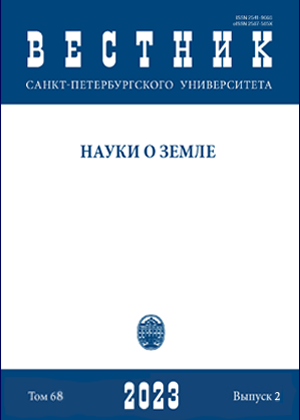Alternative spatial weights matrices: methodology and application in calculating LISA
DOI:
https://doi.org/10.21638/spbu07.2023.210Abstract
The heuristic potential of spatial methods depends heavily on thechoice ofa spatial weight matrix. The article illustrates the creation and use ofabsolute geographic versus relative socio-political matrix and tests both by calculating spatial autocorrelation for development indicators. Particularly, a comparison is made of spatial association patterns in geometric and geopolitical space on a sample of the 193 UN member states. The Moran's I is calculated to assess the degree of the neighborhood effect for both matrices. International clustering patterns are explored with local indicators of spatial association (LISA), plotted on a map with the two types of matrices. Comparing LISA cartograms helps identify possible opportunities for socio-political phenomena to spread throughout space, as well as the trends inthe spatial organization of the international politics. Carrying out calculations with different matrices allows us to single out groups of observations that constitute the core of the cluster. On the contrary, “transitive” observations that change their cluster affiliation in a supposedly homogeneous group, can also be detected. Also, the usage of different types of weight matrices can help highlight the “gray zones” - parts of the data set that lack spatial autocorrelation and may require additional research. Overall, the results suggest that usingboth absolute topological and relative socio-economic weight matrices is reasonable for the purposes of exploratory spatial analysis. Using matrices based on different types of variables concurrently can assist in detecting new trends in spatial organization and providing empirical confirmation for existing spatial patterns.
Keywords:
spatial weights matrix, relative neighbourhood, local indicators of spatial association, spatial autocorrelation, political geography, system of international relations, geopolitical bloc
Downloads
References
Downloads
Published
How to Cite
Issue
Section
License
Articles of "Vestnik of Saint Petersburg University. Earth Sciences" are open access distributed under the terms of the License Agreement with Saint Petersburg State University, which permits to the authors unrestricted distribution and self-archiving free of charge.






